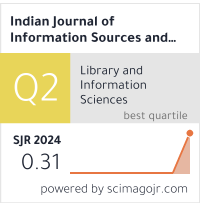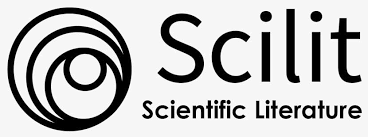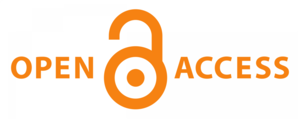Global Publication Productivity in Materials Science Research: A Scientometric Analysis
DOI:
https://doi.org/10.51983/ijiss.2019.9.1.583Keywords:
Activity Index, Materials Science, Publication Efficiency Index, Relative Comparative Advantage for Publication, Relative Growth Rate, ScientometricsAbstract
This paper examines the world research profile and growing trend of publications on Materials Science for fifteen years spanning 2002-2016 based on the data retrieved from ISI Thomson Reuters Web of Science by using various statistical tools and techniques used in the emerging field of Scientometrics. The study uses Science Citation Index of ISI Thomson Reuters Web of Science for the period from 2002 to 2016 (for a period of fifteen years) of top fifteen countries in the field of Materials Science. The indicators used in this study are Relative Growth Rate (RGR), Doubling Time (Dt.), Activity Index (AI), Publication Efficiency Index (PEI), Relative Comparative Advantage for Publication (RCAP). The findings of the study reveal that the percentage share of Materials Science publications of the World is 5.61 out of the total scientific publications of the World; the study indicates that China topped the table with 2,87,736 publications, followed by the USA (2,17,422); there is an exponential growth of publication for the world (R2 = 0.967) in Materials Science field; the Annual Growth Rate (RGR) is highest for Iran (through it ranked fifteenth in terms of publications), i.e. 27.00; Activity Index is more than one for nine countries which indicates that the research efforts of these countries correspond to the worlds average; It is evident from the study that the USA (1.48), England (1.19), Australia (1.14), Germany (1.09) and France (1.07) have more than one PEI which clearly indicates that there is an impact of publications in Materials Science by these countries is more than the research effort devoted during 2002 to 2016; China topped the list with the highest mean value of Relative Comparative Advantage for Publication (RCAP) i.e. 2.23. RCAP value of China, South Korea, Taiwan, India, Iran, Japan, Russia and France are more than one. The data indicate that these countries are specialised in the field of Materials Science.
References
Blackman, V. H. (1919). The Compound interest law and plant growth. Annals of Botany, 33, 353-360.
Braun, T., Schubert, A. P., & Zsindely, S. (1997). Nano science and nanotechnology on the balance. Scientometrics, 38(2), 321-325.
Chen, K., & Guan, J. (2011). A bibliometric investigation of research performance in emerging Nanobiopharmaceuticals. Journal of Informetrics, 5(2), 233-247.
Frame, 1977. (1977). Mainstream research in Latin America and the Caribbean. Interciencia, 2, 143-148.
Garfield, E., & Pudovkina, A.I. (2003). From Materials Science to Nano-Ceramics: Citation analysis identifies the key journals and players. Journal of Ceramic Processing Research, 4(4), 155-167.
Garg, K. C., & Padhi, P. (2001). A study of collaboration in laser science and technology. Scientometrics, 51(2), 415-427.
Guan, J. C., & Ma, N. (2004). A comparative study of research performance in computer science. Scientometrics, 61(3), 339-359.
Hiremath, R.S., & Hadagali, G.S. (2014). A Scientometric Analysis of Global Research trends in Biomaterials. International Journal of Digital Library Services, 4(4), 98-111.
Ho, Y.S. (November, 2014). A bibliometric analysis of highly cited articles in Materials Science. Current Science, 107(9), 1565-1572.
Hu, X., & Rousseau, R. (2009). A comparative study of the difference in research performance in biomedical field among selected Western and Asian Countries. Scientometrics, 81(2), 475-491.
Hunt, R. (1978). Plant Growth Analysis: London: Edward Arnold. ISI highly cited researcher http://hcr.stateofinnovation.thomsonreuters.com/
Kademani, B. S., Kumar, V., Sagar, A., & Kumar, A. (2006). World literature on Thorium research: a scientometric study based on Science Citation Index. Scientometrics, 69(2), 347-364.
Kademani, B. S., Sagar, A., & Bhanumurthy, K. (2011). Research and impact of materials science publications in India: 1999-2008. Malaysian Journal of Library and Information Science, 16(2), 63-82.
Kostoff, R. N., Koytcheff, R. G., & Lau Clifford, G. Y. (2007). Technical structure of the global nanoscience and nanotechnology literature. Journal of Nanoparticle Research, 9, 701-724.
Price, D. De. S. (1981). The analysis of Scientometric metrics for policy implications. Scientometrics, 3, 47-54.
Sagar, A., Kademani, B. S., Garg, R. G., & Kumar, V. (2010). Research trends in cobalt-60 in nuclear science and technology. International Journal of Nuclear Knowledge Management, 4, 146-164.
Schubert, A., & Braun, T. (1986). Relative indicators and relational charts for comparative assessment of publication output and citation impact. Scientometrics, 9, 281-291.
Sindagi, S., & Anandhalli, G. (2018). Scientometric analysis of Nanotechnology literature from 2000-2016 as reflected in Web of Science database. International Journal of Creative Research Thoughts, 764-773.
Velmurugan, C. (2018). Mapping of Research Performance on Materials Science in India: A Study Based on Clarivate Analytics-Web of Science Database. International Journal of Environmental Sciences & Natural Resources, 15(1), 1-12.
Walke, R., & Dhawan, S.M. (2007). Materials Science Research in India: A Scientometric Analysis. DESIDOC Bulletin of Information Technology, 27(1), 69-76.
Downloads
Published
How to Cite
Issue
Section
License
Copyright (c) 2019 The Research Publication

This work is licensed under a Creative Commons Attribution-NonCommercial-NoDerivatives 4.0 International License.









